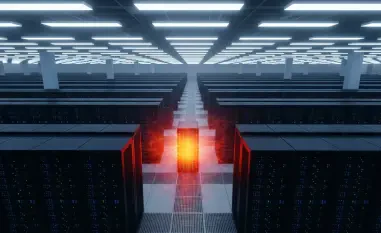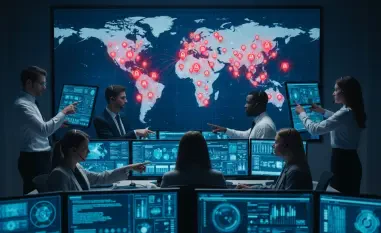Diving into the complex world of cybersecurity, I’m thrilled to sit down with Malik Haidar, a seasoned expert whose career has been dedicated to safeguarding multinational corporations from digital threats. With a deep background in analytics, intelligence, and security, Malik brings a unique perspective by blending business priorities with robust cybersecurity strategies. Today, we’ll explore the critical divide in how different levels of an organization perceive cyber risks, the implications of this gap, and actionable ways to bridge it for a stronger security posture.
How would you describe the cybersecurity perception gap in simple terms, and why does it matter so much for organizations?
The cybersecurity perception gap is essentially the difference in how various groups within a company—say, executives versus front-line staff—view and understand cyber risks. Executives might see the big picture and feel confident based on reports or metrics, while those on the ground, dealing with daily threats, often have a more cautious or even skeptical view because they’re in the trenches. This matters because if leadership underestimates risks, it can lead to insufficient resources or attention to critical areas. Over time, these small misalignments can turn into major vulnerabilities, leaving the organization exposed.
What are some specific ways this gap manifests between C-level executives and operational teams in a company?
You often see executives focusing on strategic goals, like business growth or compliance, and they might assume everything is under control if the dashboards look green. Meanwhile, operational teams are wrestling with real-time issues—patching systems, responding to phishing attempts, or managing outdated tech. For instance, after a merger, leadership might celebrate the deal without realizing the inherited risks like legacy systems or shadow IT that the front-line teams are suddenly scrambling to secure. This disconnect in priorities and awareness is where the gap shows up most clearly.
Why do you think there’s such a stark difference in confidence levels about managing cyber risks between executives and mid-level managers?
Executives, like CISOs or CIOs, often have a broader view and rely on high-level data or assurances from their teams, which can inflate their confidence. They’re also under pressure to project stability to stakeholders. Mid-level managers, on the other hand, are closer to the operational grind. They see the gaps in tools, training, or time to address threats, so their confidence is naturally tempered by those realities. It’s less about optimism at the top and more about the differing lenses through which each group views the same problem.
How can this difference in confidence create challenges for an organization’s security strategy?
When executives are overly confident, they might not allocate enough budget or resources to cybersecurity, thinking the bases are covered. This can starve operational teams of what they need to address emerging threats. For example, underfunding training or tech upgrades can leave staff unprepared for sophisticated attacks. Over time, this mismatch can erode resilience, making the company a softer target because the strategy doesn’t match the reality on the ground.
From your experience, what kinds of risks do front-line staff tend to notice that often escape the attention of leadership?
Front-line staff are usually the first to spot granular issues—things like unusual network traffic, unpatched software vulnerabilities, or even employee behaviors that could signal insider threats. Leadership might not see these because they’re often buried in day-to-day operations and don’t always bubble up in high-level reports. A classic example is during mergers, where inherited risks like outdated systems or undocumented processes are glaring to the security team but might not even be on an executive’s radar until a breach happens.
Can you walk us through how communication breakdowns between mid-level managers and executives contribute to this perception gap?
Communication is often the linchpin. Mid-level managers handle the operational load and see the nitty-gritty of threats, but if they don’t have a clear channel to relay those concerns to executives—or if the message gets filtered or oversimplified—leadership remains in the dark. Conversely, executives might not communicate strategic constraints, like budget limits, so managers feel unheard or unsupported. This lack of dialogue creates parallel realities where neither side fully grasps the other’s perspective, widening the gap.
What are some real-world consequences you’ve seen when there’s poor collaboration or reporting across these levels?
I’ve seen cases where poor communication led to delayed responses to threats. In one instance, a mid-level team detected early signs of a ransomware attack but couldn’t escalate it quickly enough due to bureaucratic reporting structures. By the time leadership was looped in, the damage had spread, costing the company significant downtime and recovery expenses. If there had been a tighter feedback loop or regular cross-level discussions, the impact could’ve been minimized. It’s a stark reminder that silos can be as dangerous as the threats themselves.
What do you see as the key drivers behind the growing disconnect between perception and reality in cybersecurity?
Several factors are at play. The rapid evolution of threats—like AI-driven attacks or supply chain vulnerabilities—outpaces many organizations’ ability to adapt, creating blind spots. There’s also a tendency to overhype certain risks in public discourse, like nation-state hackers, while underplaying mundane but critical issues like phishing or misconfigurations that teams face daily. Plus, the complexity of modern IT environments means even well-intentioned leaders can’t fully grasp the operational challenges without direct input from the field.
Why is bridging this perception gap considered a strategic priority for organizations, and what benefits come from aligning these perspectives?
It’s a strategic priority because cybersecurity isn’t just a technical issue—it’s a business issue. When executives and operational teams are aligned, decisions are faster and smarter. Executives get a clearer picture of real risks, so they can allocate resources effectively, while managers understand the ‘why’ behind certain business decisions, like accepting specific risks. This mutual understanding builds trust, reduces friction, and ultimately creates a more resilient organization where everyone is pulling in the same direction.
Looking ahead, what is your forecast for how the cybersecurity perception gap will evolve in the coming years?
I think the gap could widen if organizations don’t prioritize cross-level collaboration, especially as threats become more sophisticated and hybrid work environments complicate visibility. However, I’m also seeing a growing push for integrated approaches—like unified security platforms and regular tabletop exercises—that force executives and operational teams to engage directly. If companies invest in these bridges, we might see a narrowing of the gap, but it’ll require deliberate effort and a cultural shift to value transparency over siloed confidence.













